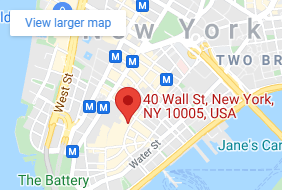Water Contamination Lawyer in New York City
What Is Water Contamination?
With the exception of air (oxygen), water is the most critical component of human survival. It has been said, in conservative estimates that, the human body can subside, without food, in the right conditions, for upwards of weeks; however, one day without water and irreparable harm to the human body can occur. Indeed, the length of human life without water has been placed at between eight and ten days.
Given its integral role in human survival, when potable water is transformed from a resource to a poison, through its having been contaminated, it creates a catastrophe. Adding to that is the fact that, although water is one of the most contamination-susceptible resources, it is almost impossible to catch its transformed poisonous character until it is too late.
Sadly, water contamination, and its potential for poisonous effects are, in most cases, not observed until injury has already occurred; and, in the worst of cases, identification does not occur until someone has already become terminally ill, or died.
How Does Water Contamination Occur?
When a contaminant is introduced to the water source, the relative size, temperature, and movement of the water have an affect on the speed with which the contamination spreads. However, the relative nature of the contaminant, be it hydrophilic (being readily soluble, or thoroughly mixable with water) or hydrophobic (tending to remain compartmentalized, and un-diffused into water), has an extreme impact on the speed with which the contaminant proliferates throughout the water source.
For example, an extremely hydrophilic contaminant, such as metyl-tertiary-butyl-ether (“MTBE”), a gasoline additive originally employed to boost octane levels and reduce air contamination which was banned in most states, proliferate throughout a water source with such speed, and with such an extensive reach that, by the time they are detected it is already too late.
Like many other mechanisms for water contamination, poisons, such as MTBE, or Benzene, or Xylene, primarily originate in sources such as underground storage tanks, or pipelines, and seep into the soil, and eventually, reach groundwater.
Finally, where the potable drinking water used by a community is drawn (as in most cases) from an underground aquifer or a reservoir, once there is a single source-point of contamination to that water supply, the potential for the entirety of the water supply to become contaminated, before it is detected, is so great that, in almost every case of water contamination, identification of the contamination comes months, years, or even decades after it initially began from its source-point.
What Are The Signs of Water Contamination?
There are signs of contamination in drinking water which should alert the consumer to the fact that there are significant water quality issues present. These signs include:
- Foul Odor: When drinking water smells of gas, or chemicals akin to gasoline products, it is a good indicator that petroleum-based volatile organic compounds have compromised the integrity of the water supply. Besides petroleum-based volatile organic compounds, heavy metals (from corroding pipes, or fixtures) can be a source of foul odor. Finally, a foul odor can be generated by a sewage leak into a water source.
- Foul Taste: When drinking water tastes of salt, it reflects the possible presence of chemicals such as chlorine, or sodium. While there is indeed the possibility, in costal communities, for seawater invasion of a drinking water source, it is often the case that a salty taste in drinking water is generated due to such contaminants like road salt, corrosive pipes, or hydrogen sulfide sources.
- Look: When drinking water looks opaque, or cloudy, or generates suds, or froth, it is a signal that a detergent is contaminating the drinking water. Conversely, if the water is leaving a residue that builds scales on the surfaces it touches, or when the purposeful use of detergents does not easily generate lather, it is an indication that the water carries the presence of metals such as copper, lead, iron, or manganese. Additionally, if stains are left on fixtures, or on materials that are laundered (which were not there prior to laundering process) it is a good indication that the water source is contaminated.
Legal Help for Water Contamination Victims
If you, a family member or a friend have suffered an injury or illness as a result of exposure to contaminated water contact Finz & Finz, P.C., toll free at (855) TOP-FIRM to speak with an attorney experienced in water contamination law or fill out the Free Contaminated Water Case Evaluation form.



























